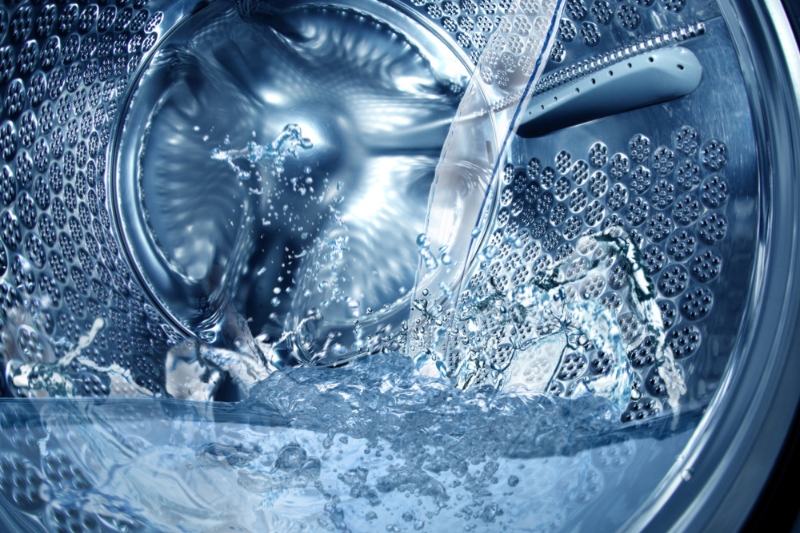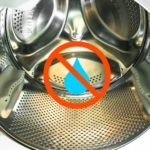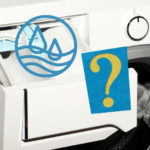When there is an issue with a washing machine, many of us are tempted to buy a new one.
However, many common issues with washing machines can be solved easily.
If you have water sitting in the bottom of your washing machine, there is likely a very simple solution to this problem.
We’re going to explore all of the causes of water sitting in the bottom of a washing machine below and help you fix them.
Cause 1: Kinked Drain Hose
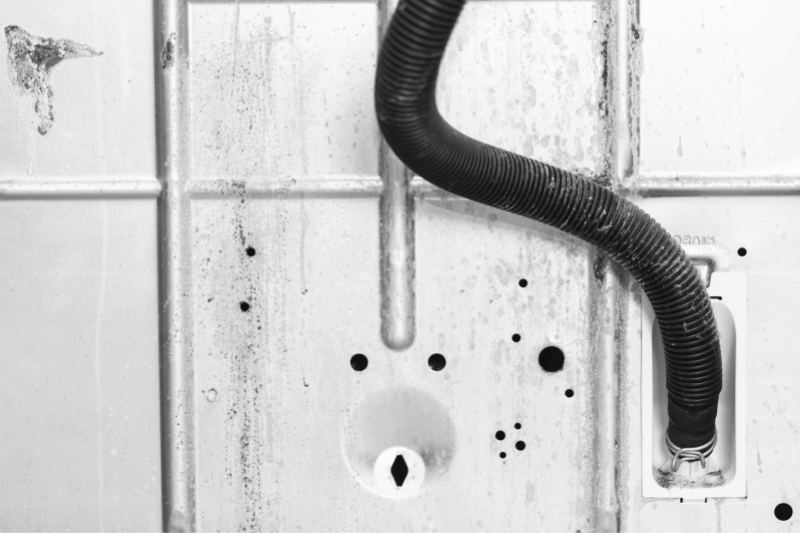
If the drain hose on your washing machine is kinked, this can slow down or completely stop water from draining from the washing machine.
If this happens, the cycle may finish before all of the water has been drained from the machine resulting in water sitting in the bottom of it.
You’ll need to unkink the hose; this should be as simple as bending the hose so that it is straight again.
It’s worth taking some time to look for any damage to the hose here. Any signs of damage (heavy creasing, for example) may mean the hose could crack in the future and will need to be replaced.
To ensure that the drain hose doesn’t kink in the future, use the U-shaped drain hose hook that comes supplied with the washing machine.
If your washing machine hose doesn’t have one of these hooks already attached, you can buy them very cheaply. They prevent the hose from kinking and ensure they stay in place during the draining process.
A loop in the drain hose can also cause water not to drain correctly, as can wedging it between the wall and the machine.
Repositioning the washing machine can correct these issues, but you still may notice the water not draining correctly.
Cause 2: Clogged Drain Hose

If your drain hose had a kink or loop that you have now fixed, yet the washing machine still isn’t draining correctly, this could be because the drain hose is clogged.
This is fairly common when a drain hose has been kinked. Dirt and debris from the wash can cling on to the inside of the pipe.
To check for clogs in the drain hose, you’ll need to remove it completely. Before you do, grab a bucket to collect any water trapped in the hose and the washing machine.
You can use a flathead screwdriver to loosen the hose clamp on the back of the machine and then pull the hose away from the washing machine once the clamp is loosened.
Hold the drain hose up to the light so you can take a look through it. If you notice any hair, socks or other debris, this could be the culprit of why there is water sitting in your washing machine.
There are several ways of unblocking the hose. If you have a pressure washer, though, you can force water through the drain hose and force any foreign objects out of it.
Once your drain hose has been unclogged, reinstall it and give the washing machine a test drive.
Cause 3: Clogged Drain
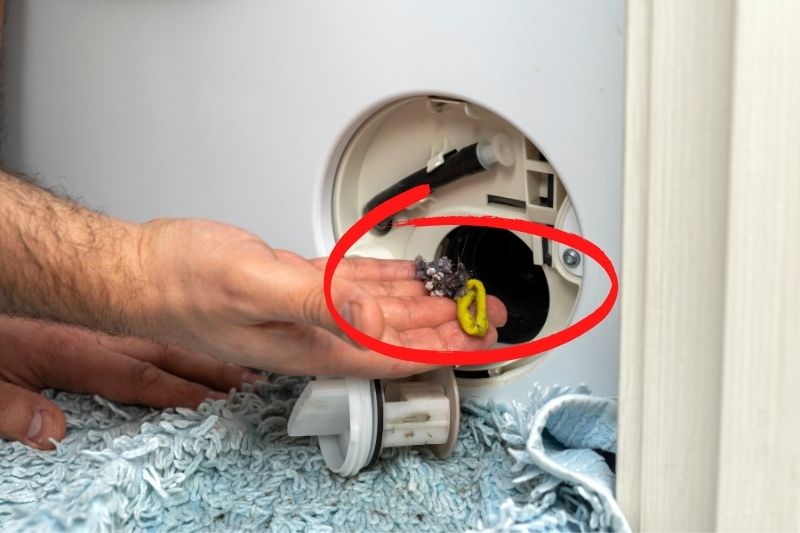
If there is no evidence of a clog in the drain hose of your washing machine, then the clog could be further into the drainage system.
You can pour boiling water mixed with bicarbonate of soda into the drain to help with this and then use a drain snake to free up any debris and make the water flow again.
Using a commercial drain or sink unblocker product can help too.
In most cases, this is usually enough to get the drain system working again.
However, in very extreme cases, you may need to call in the professionals to unblock your drain. It is often worth trying to unblock the drain yourself, though.
Unless you notice other drains being affected, the blockage will be close to the washing machine drain, so a drain snake or something similar should be able to remove it.
Cause 4: Overloading the Washing Machine
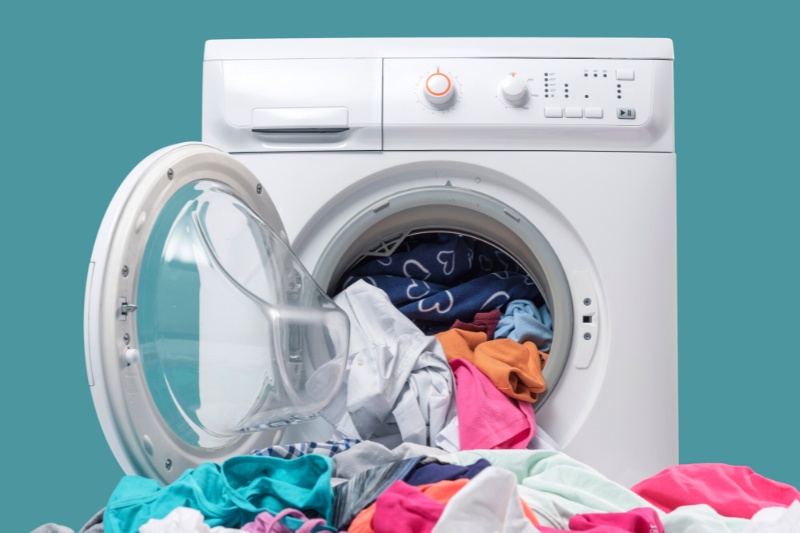
Overloading your washing machine, it can be nearly impossible for the machine to drain away all of the water during the spin cycle.
This is because the laundry becomes very heavy and doesn’t move around as much in the drum.
Once the cycle is finished, you may notice standing water in the drum because the machine hasn’t been able to draw it out of the clothes efficiently during the spin cycle.
If this happens a lot, you can try sorting your washing out by weight or bulk as well as by colour. Or try washing heavier items, blankets, for example, by themselves. This will help prevent standing water in the washing machine moving forward.
Conclusion
We hope this look at getting rid of standing water inside a washing machine has helped you solve your washing machine issue.
If you have another issue with your washing machine, we likely have an article that can help. We have loads of articles about common washing machine issues just like this one.
And if all else fails, we also have lists of the best washing machines available in the UK for all budgets as well.

In The Wash is your guide to the best laundry and cleaning products, tips and tricks. Our mission is to solve the UK’s cleaning and laundry dilemmas!
